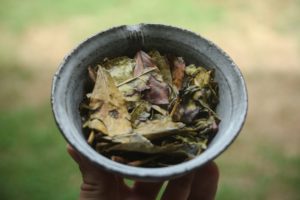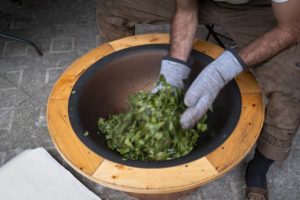A tea enclave has emerged amid the Pyrénees Mountains, a natural barrier between France and Spain that runs over 430 kilometers from the Mediterranean Sea to the Atlantic Ocean. While the region is renowned for its sheep cheese and is considered a paradise for hikers, it has recently started a new kind of agricultural venture: a terroir well suited to tea. Lucas Ben-Moura, a young agronomist with a degree from the prestigious AgroParis Tech school, chose to establish a tea plantation on his family’s land in the hills of the Argelès-Gazost valley, a few kilometers south of Lourdes. Let’s retrace his journey.
The Genesis of the Project: An Agronomy Student with a Penchant for Tea
It all began in 2018 when Lucas Ben-Moura was a student at AgroParis Tech. A native of the Basque Country, he grew up by the sea in Biarritz, a region known for the quality of its products. He gravitated towards the notion of “terroir” and what it meant and was particularly interested in the world of wine. He was also a tea enthusiast. After a few years of drinking flavored teas from a renowned French house, he learned to appreciate single origin teas, with a preference for black teas from Nepal and Yunnan. During a gap year in his agronomy studies, he delved into the world of tea through three internships in tea-producing countries: Indonesia, where he worked in organic plantations in Java and Bali, and Laos, where he studied the forest tea industry.
Before heading to Asia, he contacted Denis Mazerolle, considered the pioneer of tea in France, whose thriving plantation, Filleule des féees, is located in southern Brittany. Denis sent Lucas 25 tea plants of four varieties. He planted them in the foothills of the Pyrénees, in Argelès-Gazost, where his family owned a house and 2 hectares of land, carefully selecting a shaded and sheltered spot at the top of the family garden. Coincidentally, Denis had recently founded the association of European tea producers (Tea grown in Europe) and organized a trip for the members to China’s Zhejiang province that same year. Lucas joined them, and these encounters and experiences in tea-producing countries fueled his desire to become a tea grower.
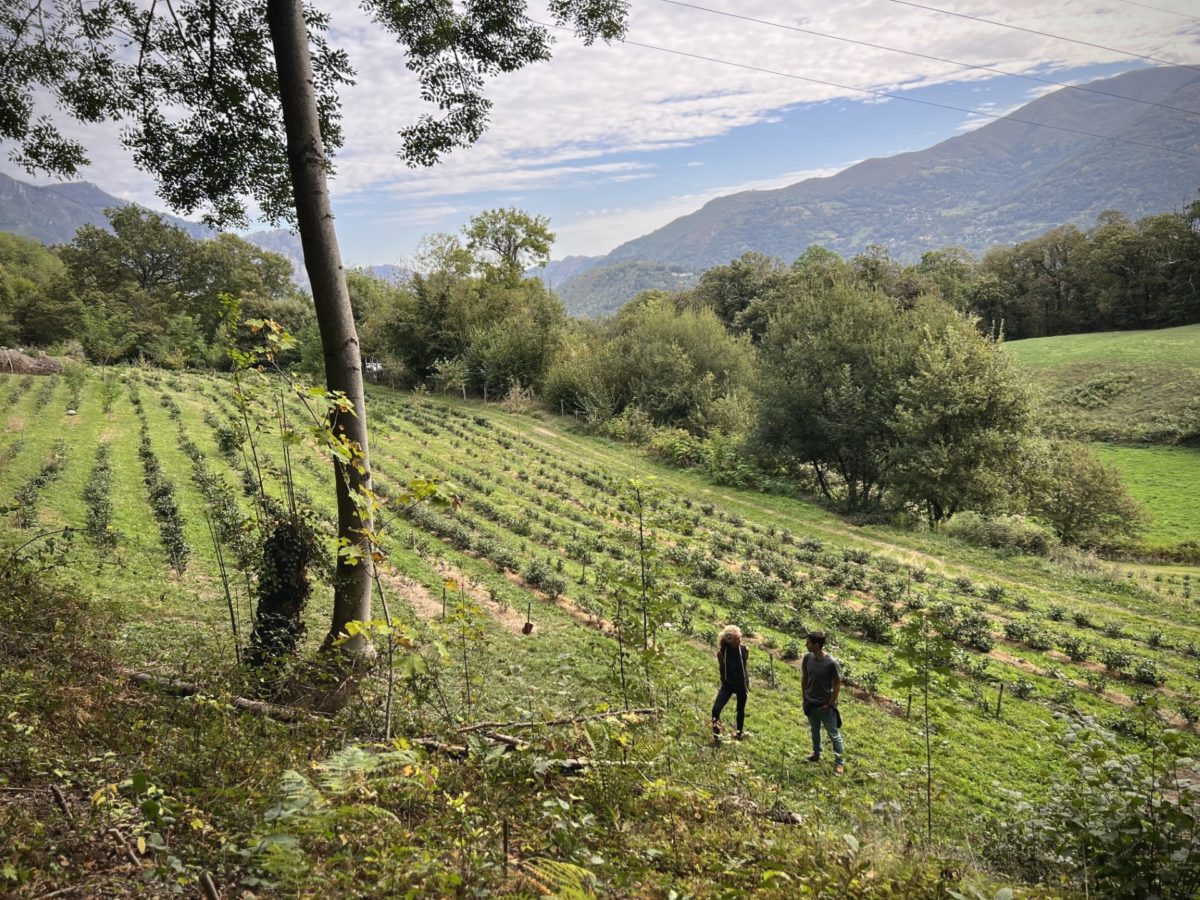
Back in France: The project launch
Upon returning from Asia, Lucas found that the tea plants he had planted before his departure had survived their first winter, suggesting adaptation to the new mountainous terroir was possible. The whole family, Lucas’s parents, brothers, uncle and aunt, and cousins, who owned the land, were ready to take part in his project. Lucas took his budding business idea and turned it into a final-year project at school. He joined the entrepreneurial program offered by AgroParis Tech’s foundation, providing both financial sponsorship and expert guidance. Professors would help him to define the agronomic aspects of his project. A three-stage progressive funding model enabled initial tests, planting new tea plants, soil analysis, and launching a donation campaign to fund the entire initial investment, following Denis Mazerolle’s tea sponsorship model. With this valuable support and his family’s 2 hectares of land, Lucas Ben-Moura could launch his venture with financial autonomy.
A terroir suited to tea cultivation?
The Argelès-Gazost valley, a region of meadows irrigated by numerous springs, served as a hayfield for stud farms and the neighboring cavalry regiment in Tarbes. Since the 19th century, it has also developed as a thermal spa area due to its sulfurous water sources. Traditional multi-produce farming geared towards subsistence has given way almost exclusively to cattle and sheep farming. The region enjoys a warm microclimate and excellent sunlight.
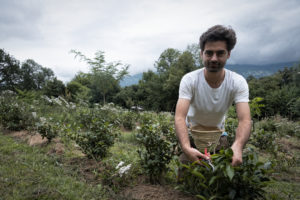
To grow tea, water, and sunlight are indeed essential. However, the quality and specificity of the soil also account for an important part of the final taste. Lucas saw the surrounding chestnut and fern forests as indicators of an acidic and well-drained soil suited to tea cultivation. Indeed, the soil is glacial moraines – or decomposed granite. These initial slopes are sheltered from the strong, cold winds of the plain and are not subject to the severe cold of higher altitudes. While it can freeze or snow in winter, tea plants tolerate cold and snow reasonably well. The crucial point was how the future plantation would respond to increasingly frequent drought episodes and the intensity of sunlight. The ultraviolet rays, with an index of 10-11, are almost twice as strong as in Brittany (between 6 and 7). Apart from these factors, all the elements seemed to align for a new tea terroir to emerge in the Pyrenean foothills.
Among the heterogeneous two hectares of family land, an old terraced meadow bordered by a chestnut forest seems ideal. East-facing, it receives sunlight until mid-afternoon. In the fall of 2019, with Denis Mazerolle’s assistance, Lucas selected 50 new tea plants and planted them on this plot.
Scale change: the Arrieulat plantation
When a new crop is launched in a region, everything has to be invented through trial and error.
In fall 2020, 3,000 plants from Filleule des Fées were planted. This new French mountain terroir, with its high UV index and significant temperature differences, seemed ideal for producing both white and black teas. With the help of Denis Mazerolle, Lucas selected plants for this production. 5,000 m2 were planted on this former meadow, and a small area was tested with ground horn.
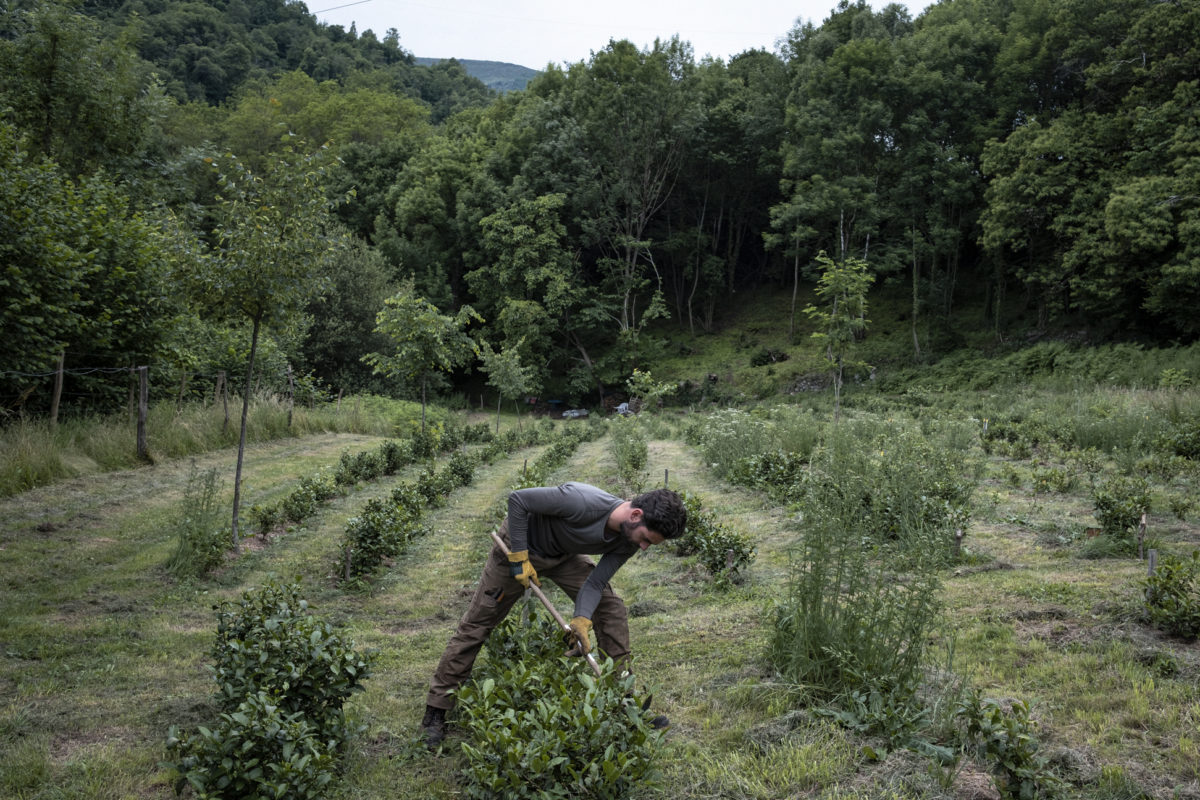
In the summer of 2021, the first assessment was made after periods of winter cold and summer drought. Nearly half the Breton tea bushes did not survive, while others flourished and seemed perfectly acclimatized. The use of fertilizers seemed superfluous in this soil, where earthworms abounded. The crushed horn experiment would not be repeated. It had the effect of attracting badgers, which uprooted the young plants and feasted on the earthworms. Thanks to the surrounding biodiversity, parasite attacks, mainly aphids, were self-regulated. The model to follow and the possibility of producing organically were thus established.
In the fall, Lucas replanted tea plants from Italy, their genetic lineage indicating good adaptability and resistance: they were originally Chinese seeds, had given rise to Georgian descendants, then Turkish, and finally Italian plants. Chinese and Nepalese plants completed the new selection. The soil was prepared with a hole at the planting spot for good root development. No fertilizer was added, and the plants were mulched.
This time, it was a success. Despite a scorching summer in 2022, with temperatures exceeding 40°C, there were few losses, and now, 4500 plants thrive on half a hectare in the shade of chestnut trees. Lucas continues to plant.
In the first year of production, the Arrieulat produced 13 kilograms of tea over the five harvests from early April to autumn, with a peak in spring. Lucas and his mother, who is also his partner, handle the maintenance of the crops—the most time-consuming part—as well as harvesting (bud and the first two leaves) and processing. Seasonal workers, paid by the day, occasionally assist. Lucas has also implemented a woofing system for tea enthusiasts, combining agricultural work with tasting sessions, facilitating rich exchanges about his teas.
Becoming a tea maker
Like those who preceded him in new plantations, Lucas Ben-Moura must adapt to find the best way to make the most of his terroir. Through exchanges with tea producers and buyers, he tried to understand others’ methods, distinguishing what is specific to a region and to the person involved due to geographical and human constraints. A black tea and a white tea, but also, unexpectedly, a yellow tea from branches—three tea colors in this first year of production, a blend of inspiration from elsewhere, “counter-inspiration”, and local specificities.
The teas of the Pyrénees
To create his black tea, Lucas drew inspiration from the hand-rolling technique he discovered during a stay in Nepal—a gentler process than rolling on a stone, resulting in a homogeneous outcome. For now, he favors a brief oxidation to keep the leaves slightly green and adds roasting one or two months after production to achieve fruity notes. The result is a mild, fruity black tea with a beautiful freshness and somewhat floral notes of hazelnuts, peanuts, and cocoa.
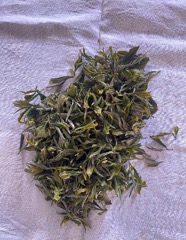
“Counter-inspiration” for white tea… Unlike what Lucas observed in tea-producing countries where withering and drying are two separate operations, he wanted to take advantage of the dry air in the Pyrenees to proceed with long withering continuously until dry. Everything is done indoors, with windows opened or closed if the weather becomes humid. A comparative test between sun drying and indoor drying convinced him of his approach. The white tea from the Pyrenees offers intense freshness, roundness, and a beautiful length with notes of meadow, flowers, and peach, holding up wonderfully to reinfusion.
Finally, Lucas embarked on a curiosity inspired by Japan and its Kyobancha—a tea from Kyoto Prefecture made from tea branches. He added a yellowing process through brief fermentation to impart gourmet notes without overworking the roasting. The result is a slightly structured but very round tea, without any bitterness and very little astringency, still maintaining freshness and notes of cocoa and toasted bread. Green teas will come later, inspired by China, with tea plants planted in well-shaded areas.
Distribution of Pyrenean tea
The distribution circuit is ensured through various models. Firstly, pre-sales through sponsorships, which also allow for planting. Sales are also made directly at the Argelès-Gazost market, allowing Lucas to introduce his teas locally and build customer loyalty. Finally, a network of independent retailers chosen for their expertise and commitment to quality enhances this very small production for their customers.
Towards a sustainable future
Lucas Ben-Moura’s primary goal is to establish sustainable and profitable agricultural production while maintaining a very artisanal dimension with a maximum area of one hectare. Quality production is an essential parameter, enabling prices to cover production costs while generating a fair margin. This year, 2023, demonstrated this possibility.
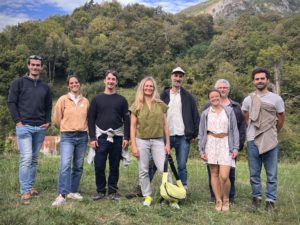
Even if the primary purpose of Arrieulat is agricultural, its tourist potential is evident in a regional context where wellness or yoga-focused hiking stays are on the rise. Local players and elected officials, initially in a “wait and see” approach to the project, now perceive its full potential. Lucas also sees it as an educational mission, bringing consumers closer to the source and allowing them to discover the entire production process from origin. “Educating, welcoming people, and selling tea directly are a valorization of what we do,” says Lucas.
In the long run, he would like to develop a true local tea industry with other farmers or breeders in the region, providing them with production tools, such as the large 100 m2 white tea dryer he plans to install in a barn currently under restoration. Lucas is laying the first foundations for this industry by producing some plants from nurseries from the seeds of his tea plants. The seeds were harvested in the fall of 2023, and the plants should be available in two years. He also reaches out to anyone interested in the region, advising and supporting new producers from the area or the Basque Country. He aims to prove “that it is possible to produce quality tea in Europe, organically, with manual picking and processing, all while generating fair compensation for labor.”
